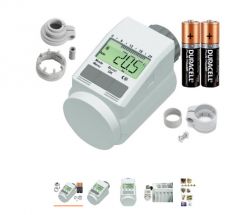Hello
I wanted to automate the heating in the living room a bit.
I found something like the one in the picture:
 .
.
You can set the temp during the day, at night, it has an open window sensor etc.
The problem is that the temperature sensor is mounted in the head and somehow I don't think that if I set 22 degrees in the living room I will have 22 degrees. After all, it's always warmer by the radiator, especially as the radiator is partly behind the sofa.
I would need something like this but with an external radio sensor. I mount the sensor on the wall and according to this sensor the head controls the temperature.
Unfortunately, digging around on google was of no use - electronic thermostatic heads do not come with an option for an external sensor - unless I have searched poorly and anyone has any interesting suggestions on how to remedy this?
I wanted to automate the heating in the living room a bit.
I found something like the one in the picture:
 .
.
You can set the temp during the day, at night, it has an open window sensor etc.
The problem is that the temperature sensor is mounted in the head and somehow I don't think that if I set 22 degrees in the living room I will have 22 degrees. After all, it's always warmer by the radiator, especially as the radiator is partly behind the sofa.
I would need something like this but with an external radio sensor. I mount the sensor on the wall and according to this sensor the head controls the temperature.
Unfortunately, digging around on google was of no use - electronic thermostatic heads do not come with an option for an external sensor - unless I have searched poorly and anyone has any interesting suggestions on how to remedy this?






